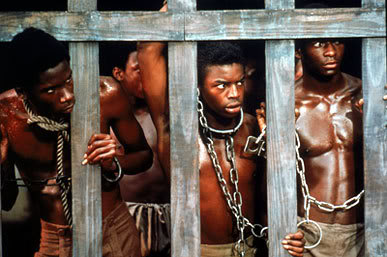There’s Yin-Yang and there’s Yin and Yang. The hyphen between Yin-Yang symbolizes the interconnection between the two while absence of the hyphen means a break, a division.
Yin-Yang is a Chinese philosophical concept of two interconnected and interdependent but seemingly opposing forces. They appear to be a perceptual duality but are actually in a symbiotic relationship for one cannot exist without the other, or make no sense without the other. They cause each other to rise and grow – for better or for worse – in their interaction with one another. Thus Yin-Yang can also bethought of as being in a complimentary but competitive relationship.
Yin-Yang’s physical manifestations are fire and water, heat and cold, light and darkness and the obvious, life and death – one makes no sense without the other. In the ethics of Confucianism there are moral-religious dimensions: right and wrong, good and evil, God and Satan. Taoism regards opposing morals as a question of perception rather than reality. Yin-yang is a primary guide in Chinese traditional medicine too as is how they serve dishes in a banquet: first cold then hot, solid then liquid, bland then spicy, sweet and sour…and in Chinese martial arts like T’aichi, Chi Kung and I Ching. Above all, Yin-Yang is, or should be, an ‘indivisible whole’ – different but ‘indivisible’ in the sense of the indispensability of one to the other. But if the interconnection and interdependence becomes irrelevant or even breaks down, it becomes Yin and Yang, divided. I hasten to say that this is purely my thesis: the two forces work not in symbiosis but at cross-purposes and damage one another until a new reality is created. The indivisible Yin-Yang is largely metaphysical. The divided Yin and Yang is purely temporal. This is how old states die, for example, and new ones are born. Thus when the temporal ‘indivisible whole’ gets divided it leads to a new temporal ‘indivisible whole’. Actually, everything in Creation is divisible expect the Supreme Creator.
Yin-Yang’s most famous motional manifestation is love and hate, which is why we often talk of a ‘love-hate’ relationship. In fact, these words couldn’t exist without the other– if there only unchanging temperature, where would ‘heat’ and ‘cold’ come from, if there were no love where would hate come from?
While matter and anti-matter can be regarded as Yin-Yang, an astro-physicist can explain this better. However Hegel’s dialectic and Marx’s dialectic are somewhat akin to this too in their own senses and spheres. Hegel’s dialectic was metaphysical: athesis (Yin) and an anti-thesis (Yang) at the same time. Change being in herentand the basis of Hegel’s dialectic, the thesis and the anti-thesis interactedand synthesized causing conflict and a new thesis is born and simultaneously ananti-thesis. And so the process goes on.
Marx’s dialectical materialism was temporal or worldly however. He assumed conflict as inherent and the basis of change. The thesis and anti-thesis clashed in a conflict situation and annihilated one another and the new reality arising becomes the new thesis with an anti-thesis accompanying it simultaneously. Hegel’s dialectic is relevant in the metaphysical; Marx’s dialectic materialism is still relevant in the temporal, and it is the latter that we are more concerned with here.
You see Yin-Yang in Hegel’s ‘master-slave’ relationship too: master and slave are interconnected and interdependent. They love and hate one another at the same time. But a day comes when the slave rebels and the Yin-Yang breaks. A new reality, new Yin-Yang is created, not one but many, as in the USA where blacks were slaves not so long ago but today a black is President of the United States of America. There’s Yin-Yang in the concept of the subjectification of the object and the objectification of the subject – without a subject there would be no object and objectification of the subject and without an object there would be no subjectification of the object, like the relationship between a painter and his painting: the painter becomes the painting and the painting becomes the painter.
It’s the same between conqueror and conquered. See how India changed culturally after the Muslim conquests: they hated the Muslims, foreigners, but also loved them as did the Muslims love the indigenous Hindus. The third Mughal Emperor Jahangir, for example, was the son of a Hindu Rajput princess. The Hindus imbibed a lot of Muslim culture and Muslims adopted Hindu culture and rituals. This is how cultures are absorbed and enriched. Later, see how after the British conquered India the culture and cuisine and language of both changed. I wouldn’t be writing this in English and you wouldn’t be reading it if it were not for the British conquest of India. We hated each other and at the same time loved and copied one other. Yin-Yang inaction.
Yin-Yang is complex, and manifests itself in greater complexity in relations between and within people, between and within states and in the inexorable march of the juggernaut of historical forces that lead to societal evolution and the making of history.
The most famous symbiotic relationship today that is informed deeply by love and hate is between China and the United States. Both are rivals in global dominance but neither can do without the other: if one collapses economically so does the other. So one has to prop up the other as well, as China is doing the US dollar and the US continues to import from China and invest there despite its trade imbalance.
Look at the India-Pakistan in the Yin-Yang concept and it might lead to better understanding. Here, Yin-Yang are all but divided, the hyphen the connects the two has all been rubbed out and it has become Yin and Yang. More about this in the near future.
This article is shorter than usual but heavier because it is more serious. One can only absorb so much and write so much in an article.




